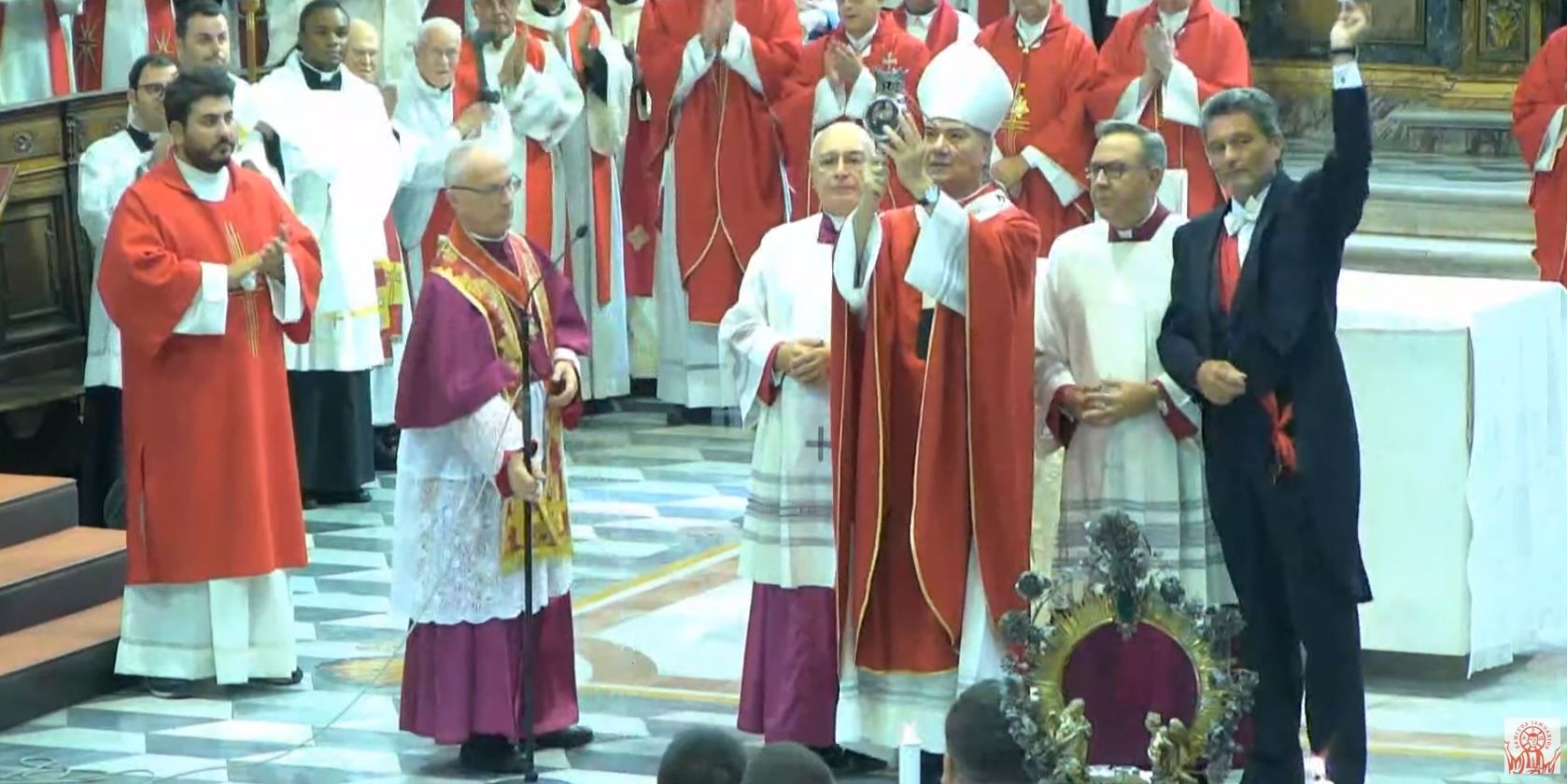Blood
Blood of St. Januarius ‘completely liquefied’ on feast day
On Sept. 19, the Catholic Church celebrates the feast of St. Januarius, bishop, martyr, and patron saint of Naples, Italy. Traditionally, on this day and on two other occasions a year, his blood, which is kept in a glass ampoule in the shape of a rounded cruet, liquifies.
It is believed the miracle has taken place since at least 1389, the first instance on record.
The liquefaction process sometimes takes hours or even days, and sometimes it does not happen at all. In local lore, the failure of the blood to liquefy signals war, famine, disease, or other disaster.
At Mass Sept. 19, Archbishop Battaglia of Naples, spoke about the miracle and what it is and is not.
“Every year we see first-hand how the witness of a man who generously gave his life for the Gospel, until his last breath, until his last drop of blood, is not something of the past, a historic event useful only to write about in some pages of a book,” he said.
“No,” Battaglia continued, “it’s a testimony that is present, living, current, and capable of speaking to the heart of every believer, pushing him to more consistency, beyond courage, to a life of giving, steeped in sharing.”

